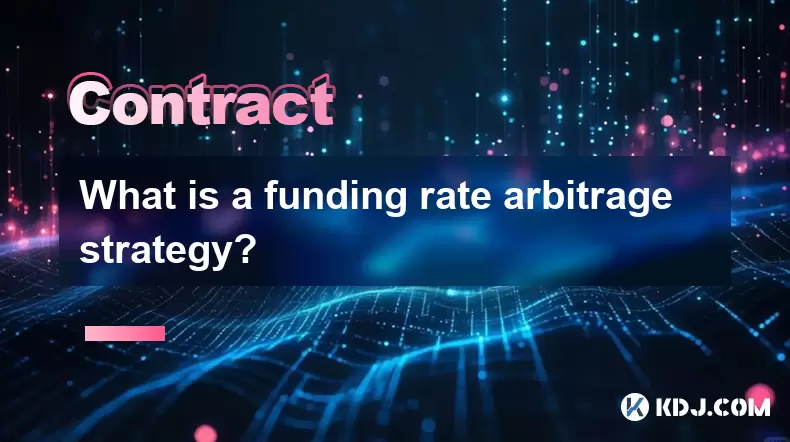-
 Bitcoin
Bitcoin $119300
1.07% -
 Ethereum
Ethereum $3730
3.87% -
 XRP
XRP $3.235
0.29% -
 Tether USDt
Tether USDt $1.000
0.00% -
 BNB
BNB $783.5
1.88% -
 Solana
Solana $188.7
0.25% -
 USDC
USDC $0.0000
-0.01% -
 Dogecoin
Dogecoin $0.2399
-0.44% -
 TRON
TRON $0.3157
2.37% -
 Cardano
Cardano $0.8254
1.94% -
 Hyperliquid
Hyperliquid $42.83
0.14% -
 Stellar
Stellar $0.4372
3.21% -
 Sui
Sui $3.859
4.91% -
 Chainlink
Chainlink $18.53
3.53% -
 Hedera
Hedera $0.2464
0.01% -
 Bitcoin Cash
Bitcoin Cash $519.8
2.46% -
 Avalanche
Avalanche $24.24
2.17% -
 Litecoin
Litecoin $113.7
0.73% -
 UNUS SED LEO
UNUS SED LEO $8.990
0.30% -
 Shiba Inu
Shiba Inu $0.00001390
0.21% -
 Toncoin
Toncoin $3.188
1.49% -
 Ethena USDe
Ethena USDe $1.001
0.02% -
 Polkadot
Polkadot $4.090
-0.91% -
 Uniswap
Uniswap $10.40
4.08% -
 Monero
Monero $326.6
3.12% -
 Bitget Token
Bitget Token $4.627
-0.42% -
 Pepe
Pepe $0.00001281
0.76% -
 Dai
Dai $1.000
0.01% -
 Aave
Aave $291.6
0.98% -
 Cronos
Cronos $0.1269
7.26%
What is a funding rate arbitrage strategy?
Funding rate arbitrage exploits differences in perpetual futures funding rates across exchanges by taking offsetting positions to capture risk-adjusted profits.
Jul 22, 2025 at 09:22 am

Understanding Funding Rate Arbitrage Strategy
A funding rate arbitrage strategy is a method employed by traders in the cryptocurrency derivatives market to exploit discrepancies in funding rates across different exchanges or trading pairs. In perpetual futures contracts, funding rates are periodic payments made to maintain the price of the contract in line with the spot market. These payments can be positive or negative, depending on whether long or short positions are dominant.
The core idea behind this strategy is to simultaneously take offsetting positions on two different exchanges or instruments where the funding rate diverges significantly. By doing so, traders can capture the difference in funding rates as risk-free or low-risk profit.
How Funding Rates Work in Perpetual Futures
Perpetual contracts do not have an expiration date like traditional futures. To ensure that the price of the perpetual contract remains close to the spot price of the underlying asset, exchanges implement a funding rate mechanism. This mechanism involves transferring funds between long and short traders at regular intervals, typically every 8 hours.
If the perpetual contract trades above the spot price, longs pay shorts a funding fee. Conversely, if the contract trades below the spot price, shorts pay longs. The funding rate is usually calculated based on the interest rate differential and the premium of the perpetual price over the index price.
Traders who understand this mechanism can analyze funding rate variations between exchanges and design strategies to profit from the differences.
Key Components of Funding Rate Arbitrage
To execute a funding rate arbitrage strategy effectively, traders must consider several components:
- Exchange Selection: Not all exchanges offer the same funding rates for the same assets. Traders must identify exchanges where the same cryptocurrency has different funding rates.
- Position Sizing: Proper allocation of capital is essential to ensure that the funding payments from one position outweigh the costs from the other.
- Timing: Funding rates are often adjusted periodically, so traders must enter and exit positions in alignment with these intervals to maximize gains.
- Market Conditions: The volatility of the underlying asset and the liquidity of the perpetual markets can impact the effectiveness of the strategy.
By carefully balancing these factors, traders can create a net positive funding inflow by being long on the exchange with a negative funding rate and short on the one with a positive rate.
Step-by-Step Execution of the Strategy
To implement a funding rate arbitrage strategy, follow these steps:
- Monitor Funding Rates: Use tracking tools or APIs to compare funding rates for the same cryptocurrency across multiple exchanges.
- Identify Discrepancies: Look for exchanges where the funding rate is significantly different—ideally one with a high positive rate and another with a negative rate.
- Open Opposing Positions: Take a long position on the exchange with the negative funding rate and a short position on the exchange with the positive funding rate.
- Hold Until Funding Interval Passes: Maintain both positions until the funding payment is executed, ensuring that the net result is a profit.
- Close Positions Strategically: After receiving the funding payment, evaluate whether to close both positions or continue monitoring for further opportunities.
This process requires precise timing and execution, as funding rates can change rapidly based on market conditions.
Risks and Considerations in Funding Rate Arbitrage
While funding rate arbitrage may appear risk-free in theory, several practical risks must be considered:
- Slippage and Fees: Trading fees and slippage during entry and exit can erode profits, especially in less liquid markets.
- Exchange Risk: Differences in exchange reliability, withdrawal policies, and regulatory environments can pose operational risks.
- Volatility: Sharp price movements can lead to liquidation of leveraged positions if not managed properly.
- Funding Rate Changes: Funding rates are not fixed and can change before the scheduled payment, potentially turning a profitable opportunity into a loss.
Traders must also be aware of collateral requirements and margin management, especially when using leverage. It is crucial to maintain sufficient buffer capital to withstand adverse price movements.
Tools and Platforms for Funding Rate Arbitrage
Several platforms and tools assist traders in identifying and executing funding rate arbitrage opportunities:
- Funding Rate Trackers: Websites like FundingRate.com or CoinGlass provide real-time comparisons of funding rates across exchanges.
- APIs: Exchanges such as Binance, Bybit, and OKX offer APIs that allow traders to automate monitoring and execution.
- Trading Bots: Some automated trading platforms support strategies that can open and close positions based on funding rate differentials.
- Portfolio Management Tools: Applications like CoinMarketCap or CoinGecko offer dashboards to track positions and performance across exchanges.
Using these tools can significantly enhance the efficiency of a funding rate arbitrage strategy.
Frequently Asked Questions (FAQs)
Q: Can funding rate arbitrage be done with any cryptocurrency?
A: While it is possible with most major cryptocurrencies that have perpetual futures on multiple exchanges, the effectiveness depends on the availability of divergent funding rates and sufficient liquidity.
Q: Is funding rate arbitrage legal?
A: Yes, funding rate arbitrage is a legitimate trading strategy. However, traders must comply with the regulatory requirements of their jurisdiction and the policies of the exchanges they use.
Q: How often are funding rates applied in perpetual futures?
A: Most exchanges apply funding rates every 8 hours, although the exact timing can vary. Traders should check the specific schedule of each exchange they are using.
Q: Do I need leverage to execute funding rate arbitrage?
A: Leverage is not mandatory, but it is commonly used to amplify returns relative to the capital deployed. However, it also increases liquidation risk, so caution is advised.
Disclaimer:info@kdj.com
The information provided is not trading advice. kdj.com does not assume any responsibility for any investments made based on the information provided in this article. Cryptocurrencies are highly volatile and it is highly recommended that you invest with caution after thorough research!
If you believe that the content used on this website infringes your copyright, please contact us immediately (info@kdj.com) and we will delete it promptly.
- NFTs, Trademarks, and Judgments: A New York Minute on the Yuga Labs Case
- 2025-07-25 12:30:11
- Bitcoin, Nativo Resources, and Gold Operations: A New Era for Corporate Treasury
- 2025-07-25 12:50:11
- Bitcoin, Jim Cramer, and the US Deficit: A Wall Street Story
- 2025-07-25 10:30:11
- TGEs, Scalability & Privacy Tech: Decoding the Future of Blockchain
- 2025-07-25 10:30:11
- Crypto Payroll Revolution: How Stablecoins are Changing the Salary Game
- 2025-07-25 12:30:11
- Ben Askren, FUNKY Memecoin, and the Fallout: A New York Minute
- 2025-07-25 10:50:11
Related knowledge

Why is my Bitstamp futures position being liquidated?
Jul 23,2025 at 11:08am
Understanding Futures Liquidation on BitstampFutures trading on Bitstamp involves borrowing funds to open leveraged positions, which amplifies both po...

Does Bitstamp offer inverse contracts?
Jul 23,2025 at 01:28pm
Understanding Inverse Contracts in Cryptocurrency TradingIn the realm of cryptocurrency derivatives, inverse contracts are a specific type of futures ...

How to find your Bitstamp futures trade history?
Jul 23,2025 at 08:07am
Understanding Bitstamp and Futures Trading AvailabilityAs of the current state of Bitstamp’s service offerings, it is critical to clarify that Bitstam...

Can I use a trailing stop on Bitstamp futures?
Jul 23,2025 at 01:42pm
Understanding Trailing Stops in Cryptocurrency TradingA trailing stop is a dynamic type of stop-loss order that adjusts automatically as the price of ...

Can I use a trailing stop on Bitstamp futures?
Jul 25,2025 at 02:28am
Understanding Trailing Stops in Cryptocurrency Futures TradingA trailing stop is a dynamic type of stop-loss order that adjusts automatically as the m...

What are the trading hours for Bitstamp contracts?
Jul 24,2025 at 11:56am
Understanding Bitstamp and Contract Trading AvailabilityBitstamp is one of the longest-standing cryptocurrency exchanges, established in 2011 and head...

Why is my Bitstamp futures position being liquidated?
Jul 23,2025 at 11:08am
Understanding Futures Liquidation on BitstampFutures trading on Bitstamp involves borrowing funds to open leveraged positions, which amplifies both po...

Does Bitstamp offer inverse contracts?
Jul 23,2025 at 01:28pm
Understanding Inverse Contracts in Cryptocurrency TradingIn the realm of cryptocurrency derivatives, inverse contracts are a specific type of futures ...

How to find your Bitstamp futures trade history?
Jul 23,2025 at 08:07am
Understanding Bitstamp and Futures Trading AvailabilityAs of the current state of Bitstamp’s service offerings, it is critical to clarify that Bitstam...

Can I use a trailing stop on Bitstamp futures?
Jul 23,2025 at 01:42pm
Understanding Trailing Stops in Cryptocurrency TradingA trailing stop is a dynamic type of stop-loss order that adjusts automatically as the price of ...

Can I use a trailing stop on Bitstamp futures?
Jul 25,2025 at 02:28am
Understanding Trailing Stops in Cryptocurrency Futures TradingA trailing stop is a dynamic type of stop-loss order that adjusts automatically as the m...

What are the trading hours for Bitstamp contracts?
Jul 24,2025 at 11:56am
Understanding Bitstamp and Contract Trading AvailabilityBitstamp is one of the longest-standing cryptocurrency exchanges, established in 2011 and head...
See all articles

























































































